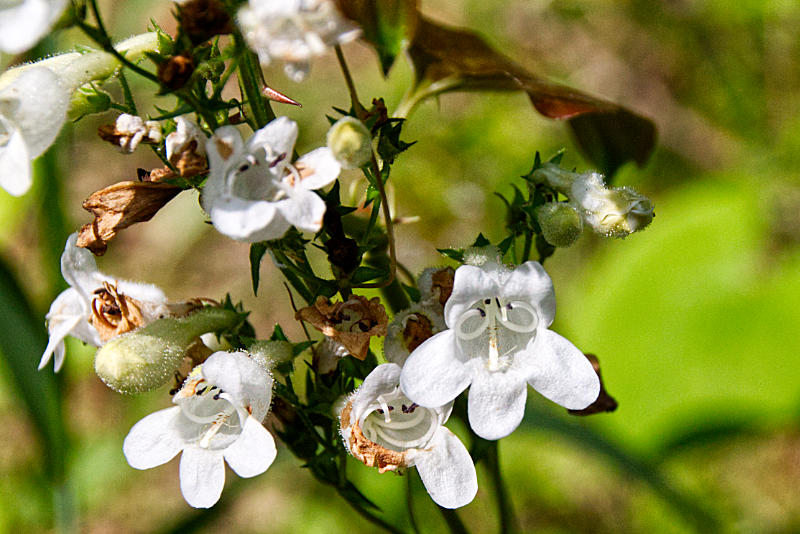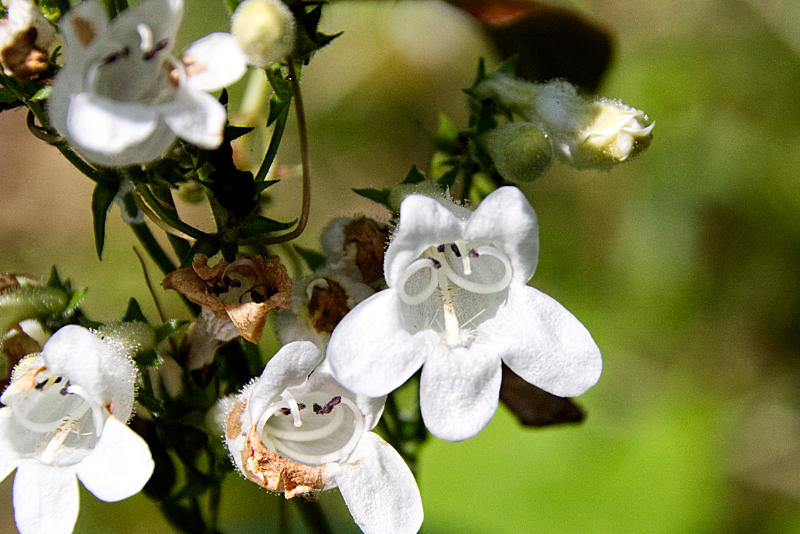
Welcome to the fascinating world of Beardtongues, the plant with a truly unique name! Despite its somewhat unusual moniker, Beardtongues are actually a beloved group of wildflowers that are prized for their beauty and hardiness. In this article, we’ll explore how to grow Beardtongues. So, whether you’re a nature lover or simply curious about the world around you, keep reading!
Beardtongue (Penstemon) is a genus in the Plantaginaceae family. They are attractive, low-maintenance perennials that produce colorful blooms throughout the summer months. They are easy-to-grow plants whose flowers come in a variety of shapes, sizes, and colors, ranging from white to pink to purple. They are native to North America and are hardy enough to survive in a variety of climates. These plants make great additions to gardens, patios, and balconies, and can be grown in containers, rock gardens, and flower beds.
They are known for their colorful, showy flowers and range in size from small, low-growing plants to tall varieties that can reach up to 3 feet in height. They thrive in well-drained soil and full sun and are drought-tolerant once established. Beardtongue plants produce showy, tubular-shaped flowers in a variety of colors, including pink, purple, red, and white. The flowers are often hummingbird-pollinated and attract a variety of insects. The foliage of beardtongue plants is typically evergreen and somewhat fuzzy, and the plants can live for up to 10 years. Beardtongue plants make great additions to rock gardens and containers, as they are low-maintenance and can tolerate some drought and wind. They can also be planted in groupings to create a showy display. While they are fairly pest and disease-resistant, they may be affected by powdery mildew if grown in wet, humid conditions. Overall, beardtongue plants are easy to care for and make a great addition to any garden. Their colorful, showy flowers are sure to bring beauty to any landscape.
These plants grow wild in the Ozarks. If you are lucky enough to find some in the wild you can take some cutting to root and transplant them into your garden. This will add a splash of color to native flower gardens.
Benefits of Growing Beardtongue
These plants offer a wide range of benefits, making them a great option for any garden. Beardtongues are known for their vibrant and showy flowers. They come in an array of different colors, such as pink, white, purple, and red, which makes them a great choice for adding color to a garden. The blooms last throughout the season, providing an eye-catching display of color. Beardtongues are also incredibly easy to care for. They are low-maintenance plants that require minimal attention. This makes them a great choice for beginners and experienced gardeners alike. They are drought-tolerant, which makes them a great choice for gardens in dry climates. Beardtongues are also known for their attractive foliage. The leaves are a vibrant green color, and they are often marked with silver or purple veins. This makes them a great choice for adding texture and interest to a garden. Finally, beardtongues are very attractive to pollinators. Bees, butterflies, and hummingbirds are all drawn to the colorful blooms of these plants, which can help increase the diversity of wildlife in your garden. Overall, beardtongues are an excellent addition to any garden. They are beautiful, easy to care for, and great for attracting pollinators. With all of these benefits, beardtongues are a great choice for any garden.
Tips for Growing Beardtongue
Environmental Requirements
With some basic requirements, these plants can not only survive but also thrive in your garden.
Location
Beardtongues are native to North America. They need at least 6 hours per day of full sun exposure to grow and bloom well. They prefer cooler climates and can tolerate short periods of frost.
Soil
Beardtongues prefer well-drained soil with a pH between 6.5 and 7.5. If your soil is heavier, you can lighten it by adding some organic matter. Since they also prefer well-drained soil you can also add some sand to heavier soil to help with drainage.
Water
Beardtongues require regular watering during the growing season. Make sure to water deeply, as they do not like to sit in soggy soil. Once established, they are quite drought-tolerant and can go without water for extended periods.
Fertilizer
Beardtongues do not need much fertilizer and too much can actually harm them. A light application of balanced, slow-release fertilizer in the spring is usually enough, but you can also top dress with compost or manure a few times a year.
Mulching
Mulch around beardtongues to help keep the soil cool, moist, and weed-free. Organic mulch such as shredded bark or wood chips is best.
Deadheading
Deadheading is the process of removing spent blooms from your beardtongue plants. This will encourage more blooms and keep your plants looking healthy and tidy.
With these basic requirements, you should be able to grow and enjoy beautiful beardtongue plants in your garden for many years to come. Below are some additional tips for successfully growing beardtongue. By following these tips, you can create a stunning garden of beardtongue plants that will thrive and provide beautiful blooms for many years.
• Choose a variety of beardtongue that is suited to your climate and soil type.
• Plant beardtongue in an area that receives full sun at least 6 hours per day.
• Make sure that the soil drains well. Amend the soil if needed.
• Water beardtongue regularly, but do not overly saturate the soil.
• Prune beardtongue after flowering to encourage new growth.
• Fertilize beardtongue in the spring for best results.
• Deadhead spent blooms to encourage new blooms.
• Divide beardtongue every few years to keep them healthy.

Conclusion
In conclusion, beardtongue is a great choice for gardeners looking to add some vibrant colors and textures to their landscape. These plants are generally low-maintenance and easy to grow, and they require minimal watering and pruning. They also attract beneficial pollinators like hummingbirds, butterflies, and honeybees to your garden, and they are deer-resistant. With the right care and attention, beardtongue can provide a beautiful and long-lasting addition to any garden. So, if you’re looking to add some beautiful colors and textures to your landscape, consider growing beardtongue!
You can find more articles like this in our blog.
For further reading about beardtongues, you can visit this link.
FAQs:
Benefits of Growing Beardtongue:
Q: What are the benefits of growing beardtongue? A: Growing beardtongue plants can provide several benefits, such as attracting pollinators, improving soil quality, and adding a colorful and unique element to your garden.
Tips for Growing Beardtongue:
Q: What are some tips for growing beardtongue plants? A: To successfully grow beardtongue, you should pay attention to its environmental requirements, including location, soil quality, water needs, and fertilizer. Additionally, proper deadheading and mulching can help ensure healthy growth.
Environmental Requirements:
Location:
Q: Where is the best place to plant beardtongue? A: Beardtongue plants typically require full sun to partial shade, so look for a location in your garden that receives at least six hours of sunlight per day.
Soil:
Q: What type of soil is best for growing beardtongue? A: Beardtongue plants prefer well-draining soil with a pH level between 6.0 and 7.5. You can amend your soil with organic matter, such as compost, to improve its quality.
Water:
Q: How much water do beardtongue plants need? A: Beardtongue plants require moderate watering, and should be watered deeply once a week during the growing season. Be careful not to overwater, as this can lead to root rot.
Fertilizer:
Q: Should I use fertilizer when growing beardtongue? A: While beardtongue plants do not require fertilizer, you can use a balanced fertilizer in the spring to promote healthy growth.
Mulching:
Q: Should I mulch around my beardtongue plants? A: Yes, mulching can help retain moisture in the soil and prevent weed growth around your beardtongue plants. Apply a layer of organic mulch, such as wood chips or shredded leaves, around the base of the plants.
Deadheading:
Q: What is deadheading, and should I do it for my beardtongue plants? A: Deadheading is the process of removing spent blooms from a plant to promote further blooming. Deadheading can be beneficial for beardtongue plants, as it can encourage more flowers to bloom throughout the growing season.